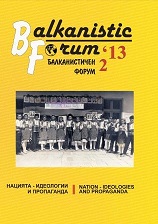Consolidation of Common Identity: The Sokol Movement in Interwar Yugoslavia
Consolidation of Common Identity: The Sokol Movement in Interwar Yugoslavia
Author(s): Vladan Z. JovanovićSubject(s): Cultural Essay, Political Essay, Societal Essay
Published by: ЮГОЗАПАДЕН УНИВЕРСИТЕТ »НЕОФИТ РИЛСКИ«
Summary/Abstract: After the creation of Yugoslavia in 1918 the Sokol movement began to promulgate Yugoslavism as an idea of preserving the unstable Yugoslav state from communism and the remnants of the Austro-Hungarian army. The Yugoslav King Alexander supported Sokol all the time seeing it as a suitable device for his national integration plans. According to the Sokol statute, it was supposed to bring up physically healthy, strong and nationally conscious citizens of Yugoslavia. The defensive training of the Sokol members was directly linked to the Yugoslav Military Ministry because both active and reserve officers took part in the instruction. Nevertheless, the expected unity of Yugoslavs was falling behind mostly because of the Serbo-Croat rivalry. The Sokol movement returned to its Yugoslav principles in 1929, after the Yugoslav state intervened. Yugoslav Sokol had left behind some positive effects and a valuable legacy by sowing the seeds of mass physical education, developing female emancipation and promoting community health and hygiene. On the other hand, the movement was a medium for drawing young people away from political life and a prelude to the political denationalization.
Journal: Балканистичен Форум
- Issue Year: 2013
- Issue No: 2
- Page Range: 44-55
- Page Count: 12
- Language: English
- Content File-PDF

